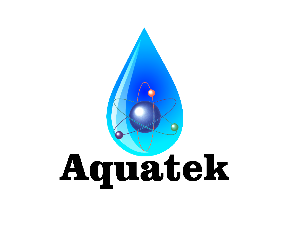Glossary of water terminology and definitions-r
Radium
Naturally
occurring radioactive elements such as radium 226 and radium 228
created in the decay of the uranium and thorium series. It can be
removed from water by cation exchange softening.
Radon
A
short lived radioactive gas produced from decaying uranium that is
soluble in water. Can be effectively removed by activated carbon
filtration or serration. Radon is considered carcinogenic when inhaled
by humans.
Raw Water
Untreated water from wells or from surface sources or any water before it reaches a water treatment device or process.
Reactivation (Revivification)
Oxidation processes for restoring the adsorptive properties of a spent sorbent such as activated carbon.
Redox
A shortened term for oxidation-reduction. A reaction where electrons are gained or lost and new elements are formed.
Regenerant
The
solution used to restore the activity of an ion exchanger. Acids are
employed to restore a cation exchanger to its sodium form. The anion
exchanger may be rejuvenated by treatment with an alkaline solution.
Potassium permanganate is used to regenerate a manganese greensand iron
and manganese iron and manganese removal filter.
Regeneration
The
process of returning the sodium ions to the mineral after it has
exchanged all its sodium ions for calcium and magnesium from hard water.
This is accomplished by first back-washing the mineral bed to free it
of all foreign matter, them passing salt brine through the mineral. The
sodium ions attach themselves to the mineral, and the calcium and
magnesium combine with the chloride from the brine to form calcium and
magnesium chlorides, which are rinsed down the drain. All water
softeners using the ion-exchange process are regenerated with these
basic steps. In similar fashion cation and anion components of a
demineralizer as well as manganese greensand are recharged with
comparable sequences.
Rejection
In
crossflow membrane filtration and deionization, it is the ability of
the membrane to reject the passage of dissolved solids and other
contaminants into the product water.
Residual
The
amount of a specific material remaining in the water following a water
treatment process. It may refer to material remaining as the result of
incomplete removal such as hardness leakage, or to a substance meant to
remain in the treated water such as residual chlorine.
Resin
Synthetic
organic ion exchange material, such as the high capacity cation
exchange resin widely used in water softeners. Technical name-
sulfonated co-polymer of styrene and divinyl benzene.
Retentivity
The ability of an adsorbent to resist desorption of an adsorbate.
Reverse Deionization
The use of an anion exchange unit ahead of a cation exchange unit- in that order- in a deionization system.
Reverse Osmosis
A
process for the removal of dissolved ions from water, in which pressure
is used to force the water through a semi-permeable membrane, which
will transmit the water but reject most other suspended and dissolved
materials. It is called reverse osmosis because mechanical pressure is
used to force the water to flow in the direction that is the reverse of
natural osmosis, namely from the dilute to the concentrated solution.
R.O.
The abbreviation for "reverse osmosis".
Rust (ferric oxide)
A
reddish product of corrosion sometimes found in water. Rust is formed
as a result of electrochemical interaction between iron and oxygen in
the presence of moisture.
The
telltale rust and black colored stains on sinks, toilets and showers,
strong metallic taste and impossible laundry are clear signs that you
have iron or manganese
in your household's water. Iron and manganese sometimes occur in water
together and are sometimes accompanied by their very unwelcome friend,
the rotten egg of the water world, hydrogen sulfide gas (H2S).
These
culprits take on different forms and must be properly identified in
order to choose the proper system for effective removal.
